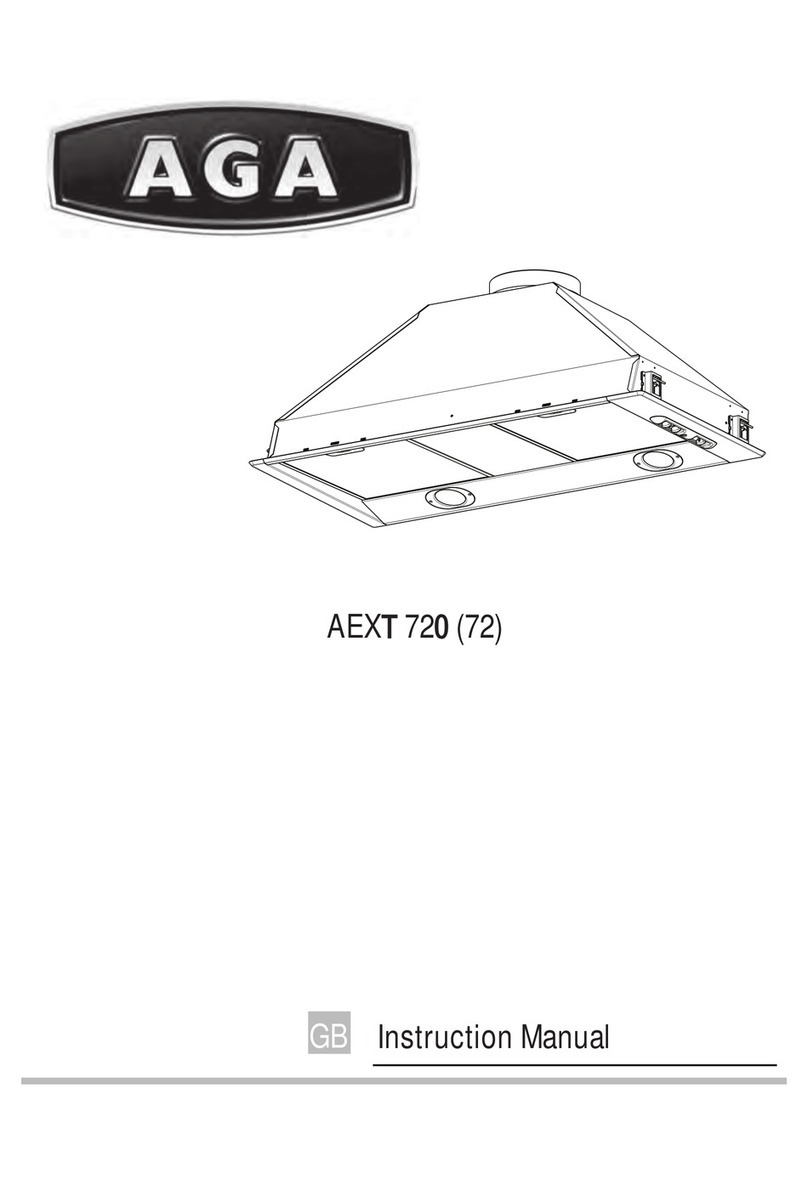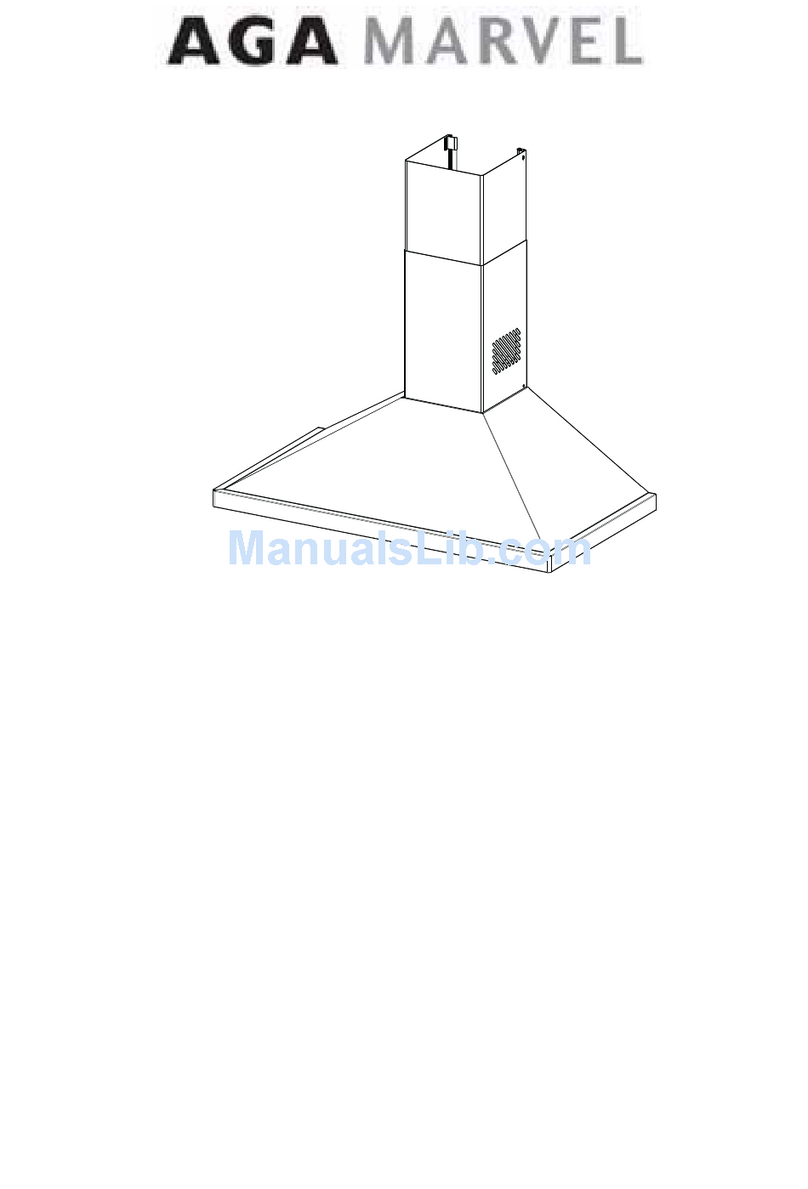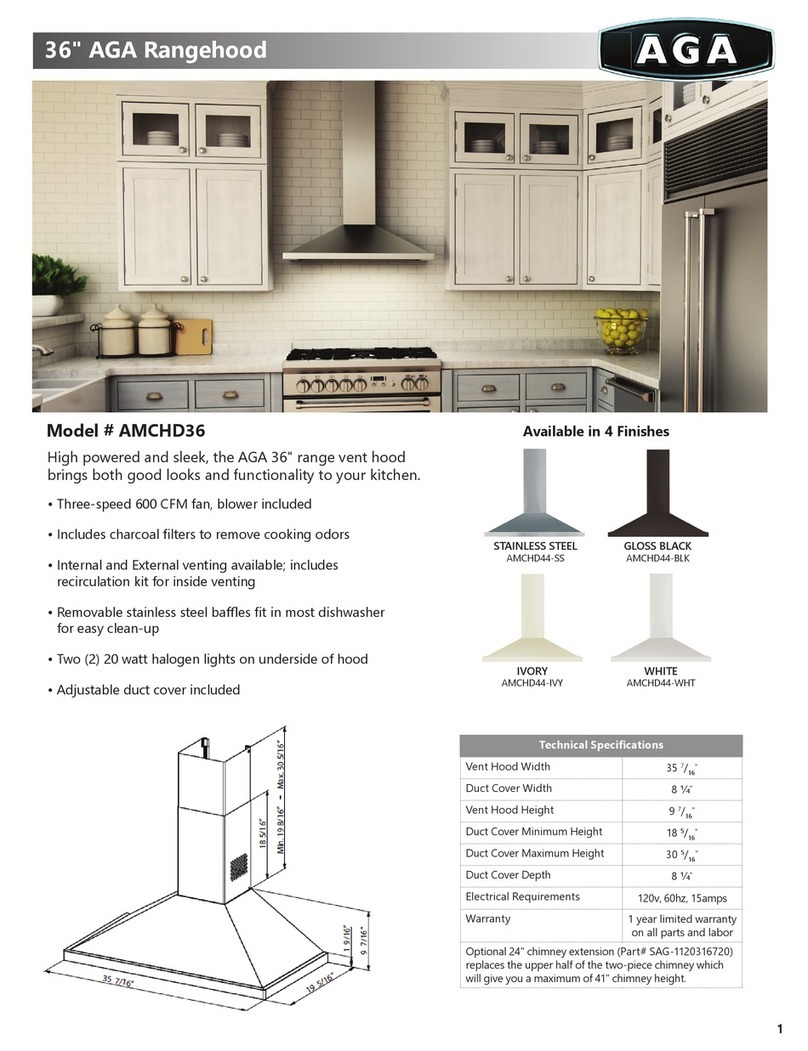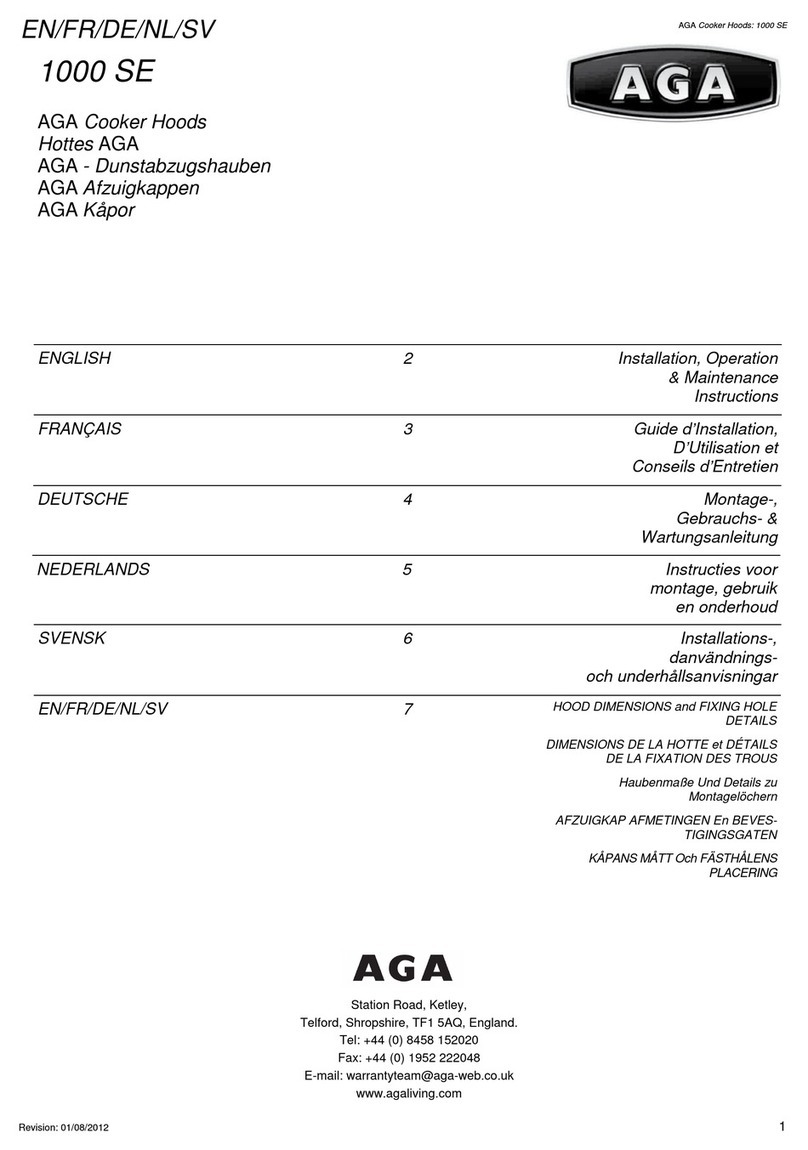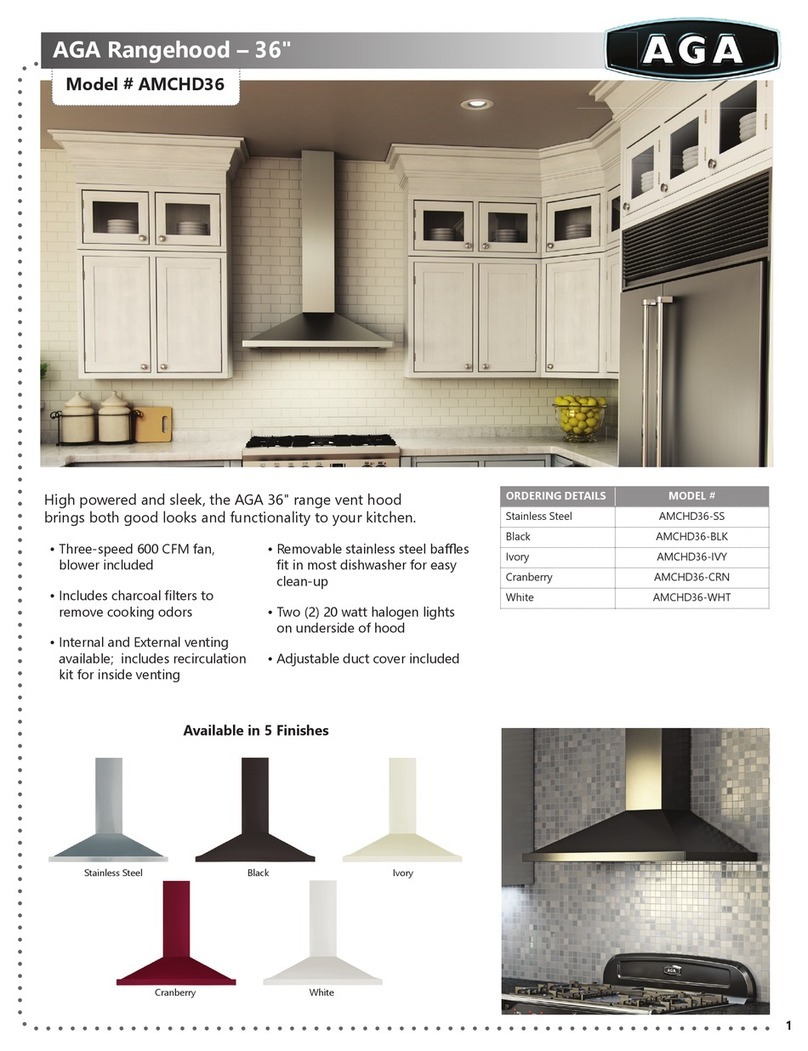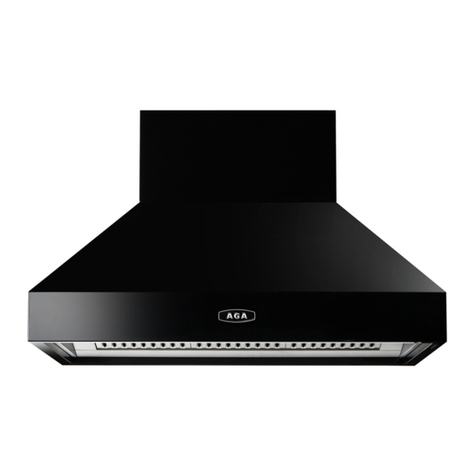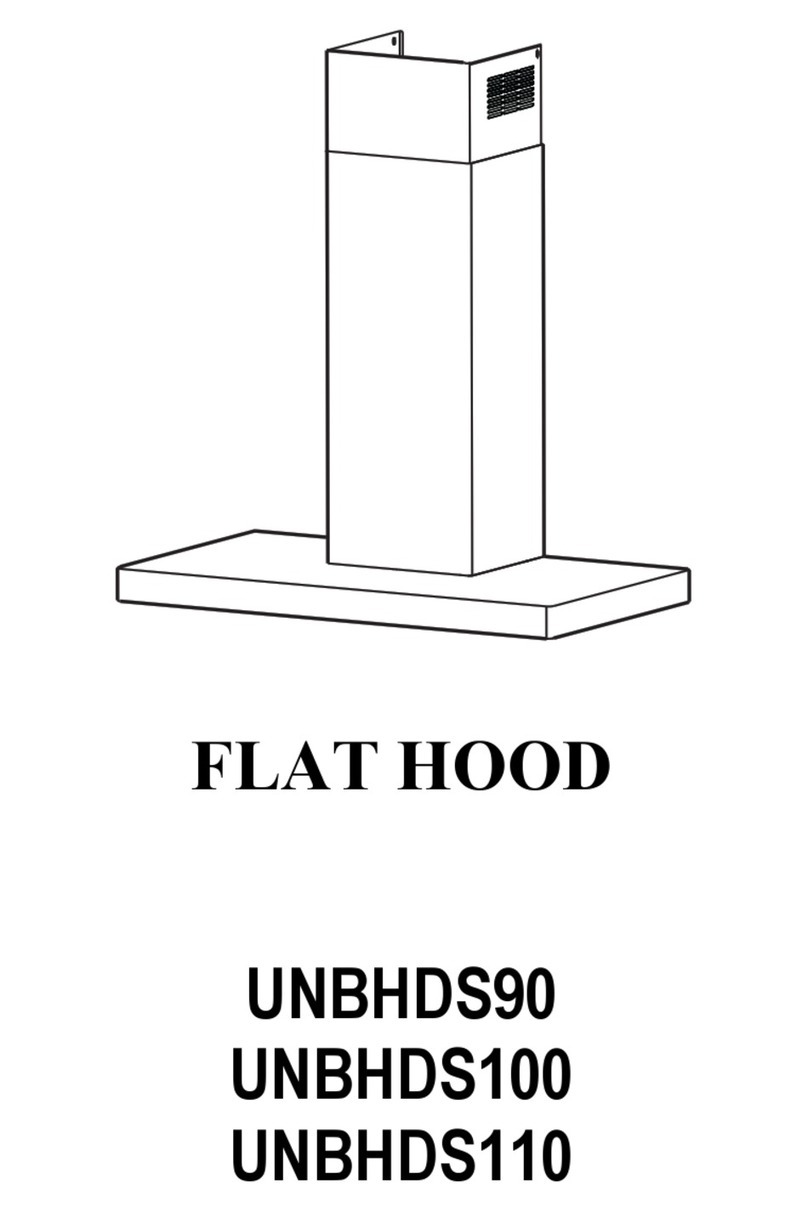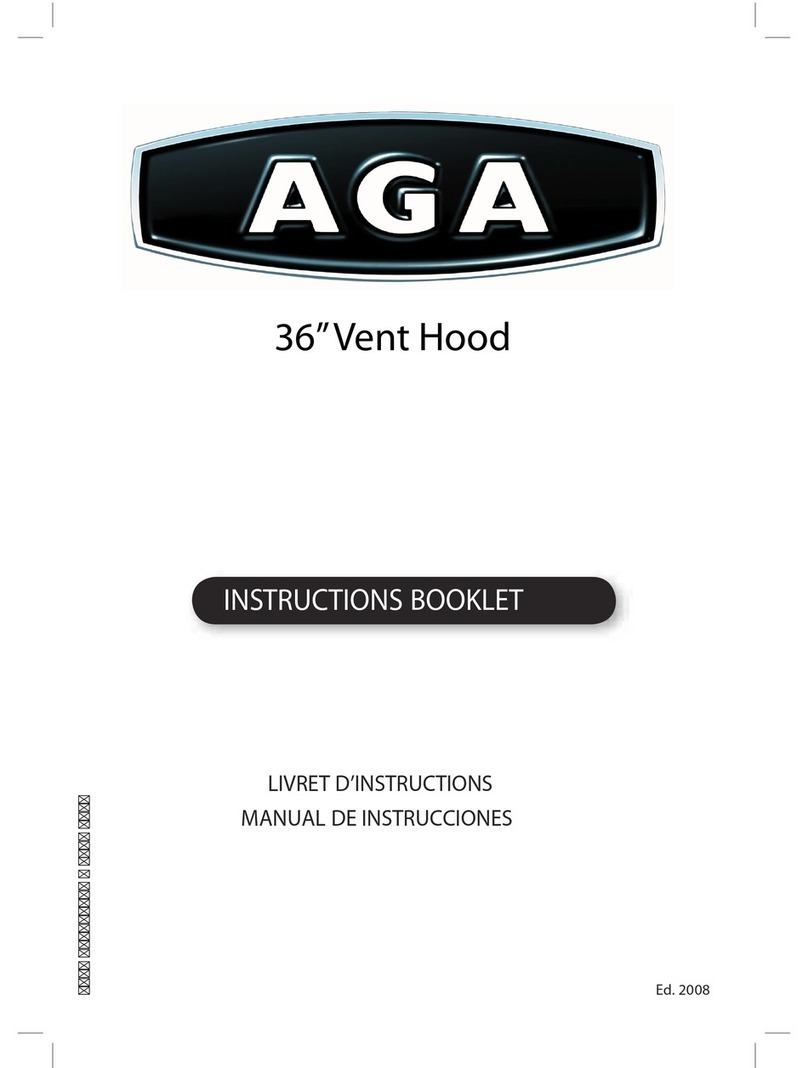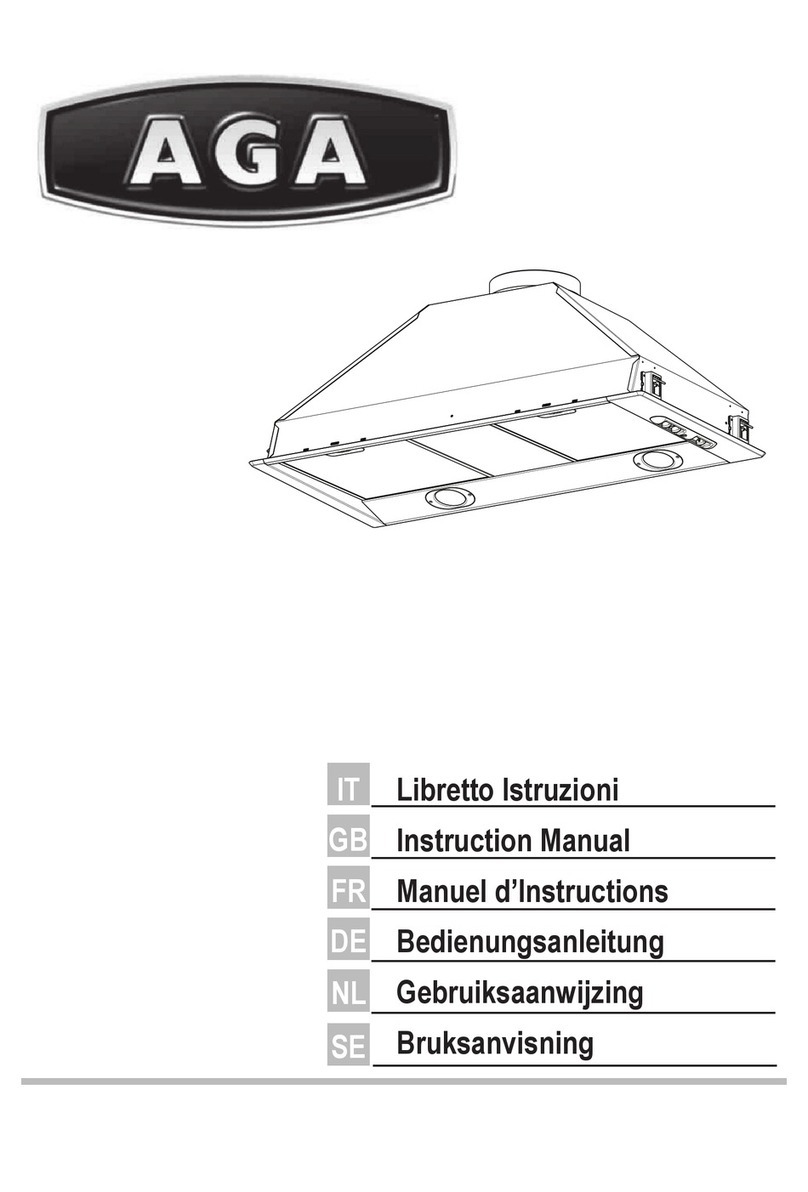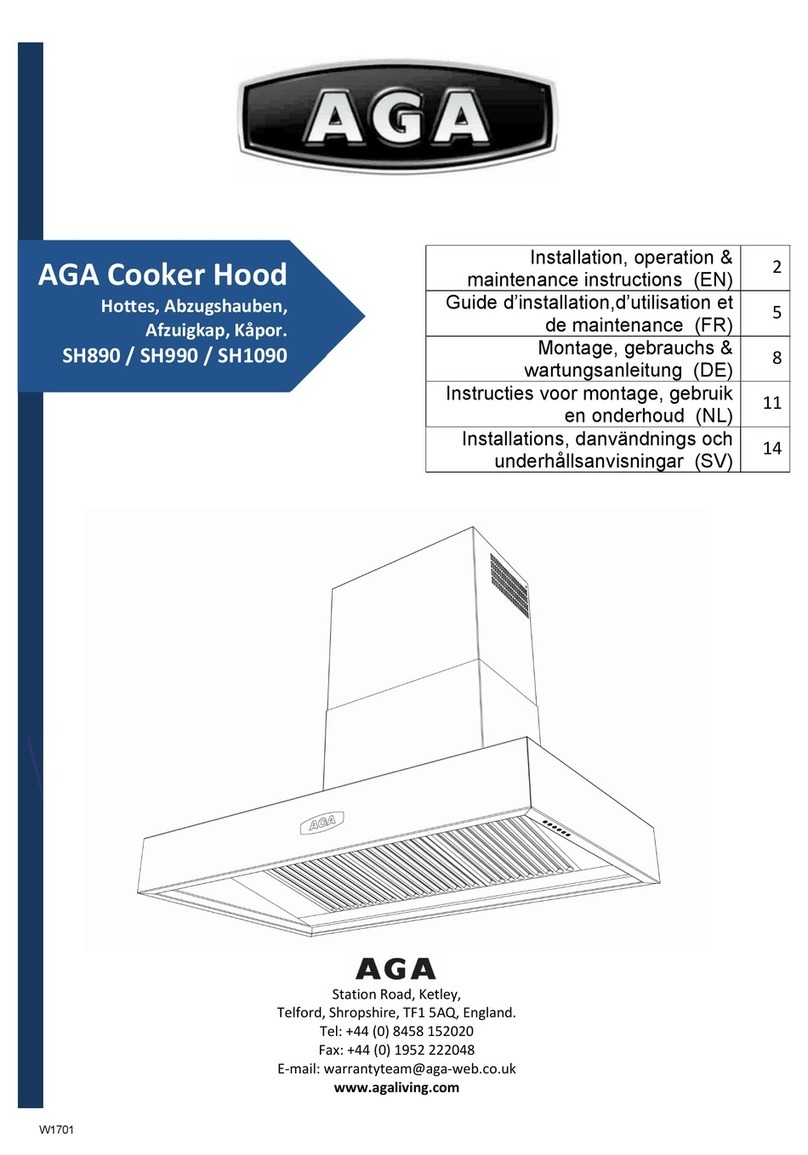
Installation, Operating & Maintenance Instructions
W0645 Aga Rangemaster FM900 (energy label version) O&M Jan 15.docx Page 2 AGA Rangemaster
taut over straight runs to ensure that the internal surface is
as smooth as possible.
If using rigid ducting we recommend that the initial duct
connection to the extractor spigot is made using semi-rigid
round ducting to allow for any positioning errors and easy
disconnection in the event of maintenance.
4. INSTALLATION
The FM range of built in extractors are designed to slot into a
cut-out/opening made in a horizontal soffit panel (usually the
underside of kitchen furniture or inglenooks/chimney
arrangements).
A panel thickness of at least 15mm must be provided into
which an opening can be made and the unit fixed.
4.1. Prepare Opening
Prepare an opening where the extractor is to be installed.
Detailed dimensioned drawings showing the extractor layout
can be found in Section 8 "General Arrangements Drawing" to
help you with this.
4.2. Duct Installation
Make holes, as necessary, in the walls or ceiling to take the
ducting from the extractor exhaust spigot location to the
outside.
Note: A 175mm diameter hole is suitable for both ducting and
any electrical cables (such as power or remote fan cables) to
pass through.
Depending upon your installation you may need to run the
ducting before or after the extractor is in place, however, all
holes must be made in advance to avoid debris entering the
appliance.
The duct route length should be kept as short as possible with
as few bends as possible (see Section 3).
If terminating on an outside wall a suitable weather louvre
should be fitted. A variety of ducting components and
complete kits are available to suit most installations.
For roof or chimney duct terminations please contact Aga
Rangemaster or seek alternative specialist advice.
Recirculating Models
We do not recommend recirculating air installations and they
should be avoided wherever possible (see section 3).
If your extractor has been adapted for recirculation (not the
standard configuration) then adequate provision must be
made for exhausted air to return into the kitchen (at least
equivalent to 125mm diameter round duct) - e.g. ducted out
through the top of the cabinet. Failure to do so may cause the
unit to overheat and fail and will invalidate your warranty.
4.3. Electrical Installation
The extractor is a stationary appliance designed to be
connected by fixed wiring to the electrical supply. A competent
electrical technician must perform the electrical installation.
The hood must be fed from a dedicated 230Vac single
phase electrical supply terminated with a switched spur
fitted with a 3A fuse. The spur should be located adjacent to
the hood/cooker so that the supply can be disconnected from
the hood using the switch. The means of disconnection from
the supply must have a minimum contact separation of 3mm
in all poles. Alternatively, a means of disconnection in the
fixed wiring according to the relevant wiring rules must be
fitted.
For your convenience you may wish to terminate the electrical
supply from the switched, fused spur with a standard UK 3 pin
240V socket positioned close to the extractors intended
location.
The extractor can then be fitted with a standard 240V 3 pin
plug so that it can be plugged in to the switched supply by the
appliance installer.
Should you wish to wire the appliance directly into the
switched, fused spur then a supply cord for connecting the
spur to the extractor is included. The mains supply is
connected to the free end of this cord as follows:
INCOMING SUPPLY CORD CONNECTIONS
Live Brown
Neutral Blue
Protective Earth Green/Yellow
4.4. Connecting the Ducting
Terminate the ducting where it exits the building. If using a
wall mount weather louvre secure the ducting to the louvre
spigot and attach the louvre to the wall. Ensure that the air fins
are directed downwards. If you are fitting an alternative
termination ensure that the ducting is secure.
If using expanding foam make sure that any flexible ducting is
supported internally to prevent it crushing where foamed.
Pull flexible ducting back along its route such that it is as
smooth as possible. Position the extractor face down and as
close to the opening as is practical and cut off excess before
connecting the ducting to the extractor exhaust spigot using
plastic tie straps or a suitable alternative (e.g. jubilee clip) - do
not use duct tape as the sole means of connection.
Note: The FM900 has integral non-return flaps as part of the
spigot assembly to reduce air blowing back into the unit from
outside. Take care not to obstruct these flaps when
connecting flexible ducting. The flaps are designed to
supplement the provisions you make in your ductwork to
prevent draughts. You may remove these flaps if you are
concerned they will catch on your ductwork provided that other
measures to control draughts have been installed.
Check that the duct has not been flattened or kinked.
4.5. Fixing the Extractor in Position
Fixing the extractor safely into position requires two people
so do not start if assistance is unavailable.
Remove the grease filters as described in Section 6 to
prevent damage whilst manoeuvring the product.
Fixing holes are located in the extractor fixing flange – see
Section 8 "General Arrangements Drawing". The extractor
is held securely in place by screws into the soffit panel
through these holes.
Check that the electrical supply chord has been
connected, that power is switched off and that the ducting
is securely fastened to the spigot.
Push the extractor up through the prepared opening and
mark the positions of the fixing holes.
Take care not to crush or introduce undesirable
bends/kinks in the ducting when pushing the extractor into
place.
ELECTRICAL HAZARD
DISCONNECT ELECTRICAL SUPPLY
BEFORE PROCEEDING FURTHER
